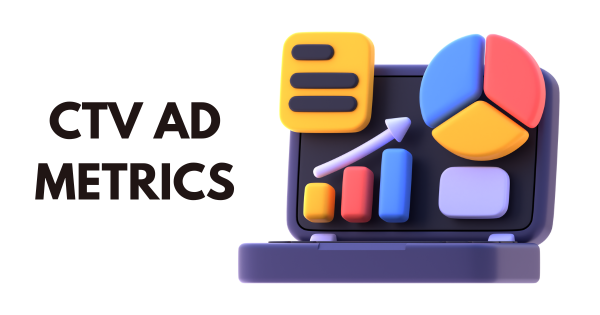As the world of Connected TV evolves, so do the advertising possibilities. No longer confined to passive viewing, CTV Ad Formats empower brands to engage, entertain, and educate viewers in entirely new ways.
In this ever-expanding digital universe, advertisers can craft narratives that respond to viewers’ interests and preferences, ensuring every ad feels like an invitation rather than an interruption.
With CTV Ad Formats, the boundaries between content and commercials are blurred, creating an exciting landscape where advertising is as captivating as the shows.
Let’s have a look at these interactive CTV Ad Formats in detail!
Dynamic Ad Insertion
Dynamic Ad Insertion (DAI) is one of the most powerful CTV Ad Formats. It allows advertisers to deliver highly targeted and relevant ads to viewers based on their demographics, behavior, or other data. It can insert ad creatives & products within the stream that were not originally present.
Here’s how the DAI format works:
Content Stream
DAI takes advantage of the fact that most CTV and streaming services offer a continuous stream of content, such as TV shows, movies, or live events.
Ad Decisioning
When a viewer accesses this content, the streaming platform or service uses ad algorithms and data analysis to determine the most appropriate ad to insert into the stream. This decision is often based on user data, including interests, location, and viewing history.
Real-Time Ad Insertion
Once the ad decision is made, a relevant ad is dynamically inserted into the content stream. It can happen in real-time, seamlessly replacing the regular ad break or slot with a targeted advertisement.
Seamless Viewing Experience
Viewers experience a smooth transition from the content they were watching to the dynamically inserted ad. No abrupt interruptions or jarring transitions ensure a positive user experience.
Ad Measurement
DAI also provides robust measurement and tracking capabilities. Advertisers can monitor ad performance, including views, click-through rates, and conversions, allowing for data-driven optimizations of their campaigns.
Benefits of Dynamic Ad Insertion (DAI)
Dynamic Ad Insertion (DAI) presents a paradigm shift in the advertising landscape, offering many advantages that reshape how brands connect with their target audiences. This innovative technology revolutionizes how ads are delivered and consumed in the digital age. It is a format that enhances the advertising experience for viewers and advertisers by providing more relevant and timely ads while maintaining a seamless viewing experience on CTV and streaming platforms.
Let’s have a look!
Targeted Advertising
DAI enables advertisers to target specific demographics or audiences with tailored ads, increasing the chances of engagement and conversions.
Reduced Ad Fatigue
By delivering relevant ads to the viewer, DAI helps reduce ad fatigue and irritation, as viewers are likely to find the ads interesting and valuable.
Flexibility
Advertisers can change their ad creatives, targeting parameters, and messaging on the fly, allowing real-time adjustments to optimize campaigns.
Monetization
Streaming platforms can maximize revenue by delivering personalized, higher-value ads, leading to increased ad rates and ad inventory value.
Ad Blocking Prevention
DAI makes it more challenging for viewers to use ad-blockers because ads are dynamically inserted into the content stream, making them difficult to block with traditional ad-blockers.
Graphic Overlay Ads
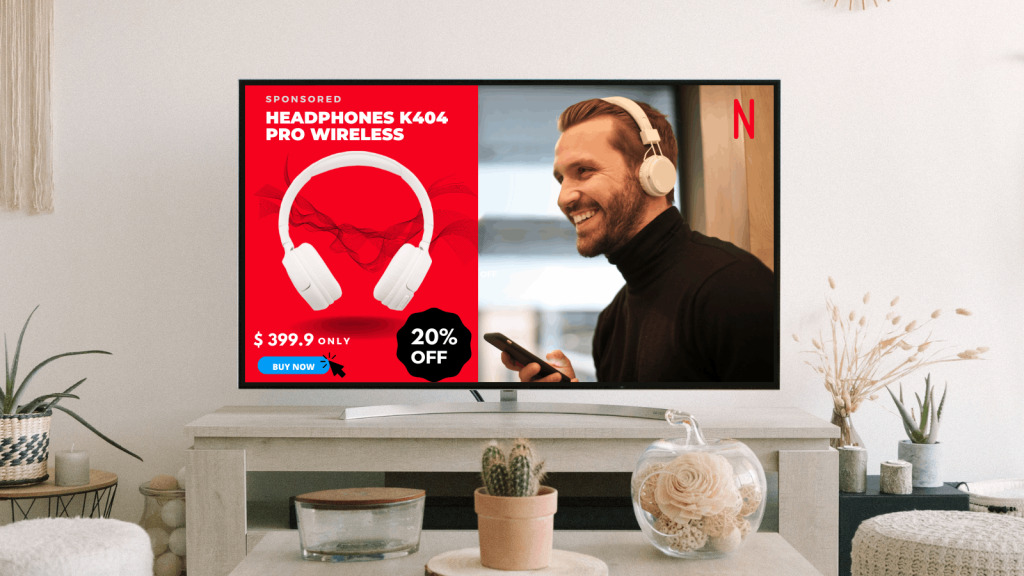
Graphic Overlay Ads are intuitive ads based on video content your audience is watching. This format overlaps visual elements, such as text, images, or animations, onto the video content while playing. Graphic overlays are typically used to convey additional information, promote a product or service, or engage viewers in a more visually appealing way. It offers a versatile way to communicate messages and entertain viewers with video content. When used effectively, they can provide a seamless and visually appealing advertising experience that captures the audience’s attention and drives desired actions.
Key Features of Graphic Overlay Ads:
Enhanced Messaging
Graphic overlays allow advertisers to add context, calls to action, or supplementary information directly onto the video. It can effectively highlight promotions, discounts, or key product features.
Branding
Advertisers can reinforce their brand identity by incorporating logos and brand colors into the overlay. It helps viewers associate the content with the brand.
Clickable Elements
In digital formats, graphic overlays can include clickable elements, such as buttons or links, enabling viewers to interact with the ad, visit a website, or purchase.
Real-Time Updates
Advertisers can update the overlay content in real-time, making it possible to showcase time-sensitive information, like live event scores or changing inventory levels.
Complementary Visuals
Overlays can be used creatively to complement the video content. For example, if a cooking show features a particular ingredient, a graphic overlay can display a recipe or related cooking tips.
Viewability
Graphic overlays are often designed to be non-intrusive, allowing viewers to simultaneously see both the video content and the overlay. It enhances user experience and keeps viewers engaged.
Performance Tracking
Advertisers can track the performance of graphic overlay ads through various connected tv metrics, such as click-through rates, engagement, and conversion rates.
Did You Know?
In 2023, 82 percent of respondents to a survey subscribed to at least one video streaming platform.
Contextual Video Ads
Contextual video advertising is a highly targeted and relevant CTV ad format that aligns with the content and context of the video being watched. This format aims to provide viewers with ads closely related to the video content, enhancing the user experience and increasing the likelihood of engagement and conversion.
It offers a win-win situation for both advertisers and viewers. Advertisers can reach their target audience with highly relevant content, while viewers benefit from a more enjoyable and seamless viewing experience. This format leverages the power of context to make advertising more engaging and effective in online video content.
Here’s how contextual video ads work:
Content Alignment
Contextual video ads analyze the content of the video being streamed or watched to determine its subject matter, themes, and context. This analysis includes the video’s audio, transcript, metadata, and visual elements.
Ad Matching
Advertisers then use this contextual information to select and deliver ads directly related to the content. For example, contextual ads might promote kitchen appliances or ingredients if a viewer watches a cooking tutorial.
Relevance
The primary benefit of contextual video ads is their relevance. By aligning ads with the content, advertisers can capture the viewer’s interest and attention because the ad directly relates to their current engagement.
User Experience
Contextual ads strive to provide a seamless viewing experience. They are less disruptive and jarring than unrelated or irrelevant ads, making viewers more likely to tolerate and engage with them.
Improved Engagement
When viewers see ads that resonate with the content they’re watching, they are likely to engage with the ad by clicking, interacting, or even making a purchase.
Brand Safety
Contextual advertising can also help ensure brand safety by avoiding ad placement in inappropriate or sensitive content.
Data-Driven Targeting
Advanced algorithms and machine learning are often used to determine the context and relevance of the video content, ensuring precise ad targeting.
Performance Tracking
Advertisers can track the performance of contextual video ads through metrics such as click-through rates, viewability, and conversions, allowing for data-driven optimizations.
Shoppable Ads
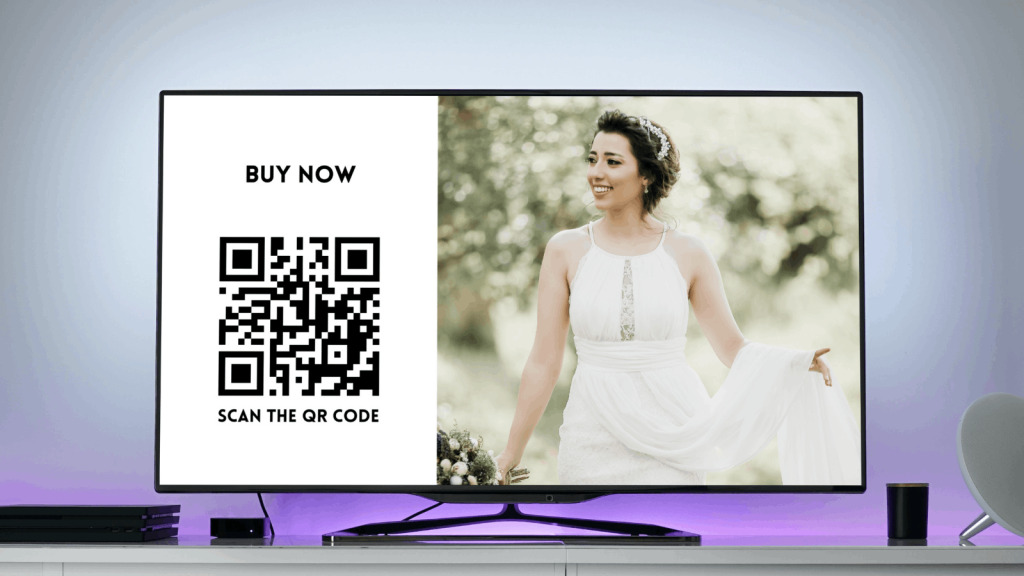
Shoppable CTV ads enable viewers to purchase products directly through the ad. It is a dynamic and interactive advertising technique that seamlessly blends content and commerce. In shoppable ads, viewers are exposed to a product or service and can directly interact with and purchase it.
It creates a bridge between content consumption and commerce, offering consumers a seamless and convenient shopping experience. By allowing viewers to interact with products directly within the ad, brands can effectively showcase their offerings and drive immediate conversions, making shoppable ads a valuable tool for e-commerce and retail businesses.
Here’s how shoppable ads work:
Product Integration
Shoppable ads feature products or services that are integrated into the content. It can include clothing worn by models, furniture in a room setting, or items used in a tutorial.
Interactive Elements
Shoppable ads incorporate interactive elements such as clickable hotspots, buttons, or links overlaid on the video or image. When viewers click on these elements, they are presented with additional information about the product, including pricing, availability, and product details.
Direct Purchases
One of the primary benefits of shoppable ads is the ability to make purchases directly within the ad. Viewers can add products to their cart and complete transactions without leaving the ad experience.
Product Catalogs
Some shoppable ads feature entire product catalogs or collections, allowing viewers to browse and explore a range of items related to the advertised product or theme.
Real-Time Updates
Advertisers can update product information, prices, and availability in real time, ensuring that viewers can always access the latest information.
Engagement and Convenience
Shoppable ads provide a high level of engagement and convenience. Viewers can seamlessly transition from discovery to purchase without visiting a separate website or store.
Measurement and Analytics
Advertisers can track the performance of shoppable ads, including click-through rates, conversion rates, and revenue generated, allowing for precise measurement of ROI.
Cross-Platform Capability
Shoppable ad formats are adaptable to various digital platforms, including social media, mobile apps, websites, and connected TV, making them versatile for reaching different audiences.
Live Streaming Ads

Live streaming CTV ad formats are specialized advertising designed to engage audiences during live video broadcasts. These formats are particularly effective for reaching viewers in real-time and can be used during live events, sports matches, webinars, gaming streams, and more.
Live-streaming ads can be highly engaging when your target audience is watching live events or sports on CTV. It allows real-time viewer interaction and can be integrated seamlessly into the event. It leverages the popularity of live video content to engage audiences in real-time.
Here’s how live-streaming ad formats typically work:
Interactive Elements
Live streaming ads often include interactive elements to engage viewers. It can involve live chats, polls, giveaways, or calls to action that encourage viewers to interact with the ad content or the host.
Real-Time Engagement
Brands can engage with viewers in real-time by responding to comments and questions during the live broadcast. This interaction fosters a sense of community and authenticity, enhancing the effectiveness of the ad.
Sponsored Live Events
Brands can sponsor live events or create live-streaming events to showcase their products or services. It can include product launches, behind-the-scenes tours, or live demonstrations.
Exclusive Offers
Brands can offer exclusive promotions or discounts to viewers during live broadcasts, creating a sense of urgency and encouraging immediate action.
Social Media Integration
Live streaming ads can be simultaneously broadcasted on social media platforms, expanding their reach and engagement potential.
Performance Metrics
Advertisers can track performance metrics, such as viewer engagement, click-through rates, and conversions, to measure the effectiveness of live-streaming ad campaigns.
Dynamic Content
Live streaming ads allow for dynamic content updates, ensuring viewers receive real-time information and updates about products, events, or offers.
Brand Exposure
By associating with popular live streamers or high-profile live events, brands can gain significant exposure to their target audiences.
Sequential Ads
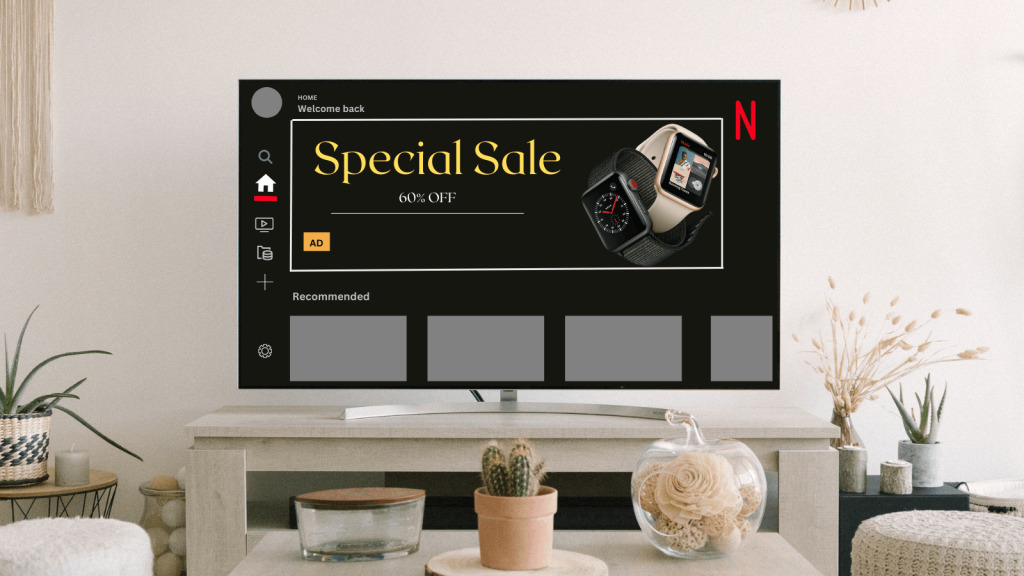
Sequential ad formats are a strategic approach to CTV digital advertising where a series of ads are shown to viewers in a specific order to tell a cohesive and engaging narrative. This storytelling technique captures and maintains the viewer’s attention over time, gradually revealing a brand’s message or product benefits.
Here’s how sequential ad formats typically work:
Introduction
The first ad in the sequence serves as an introduction, setting the stage for the narrative. It may focus on creating awareness, generating curiosity, or establishing an emotional connection with the audience.
Progressive Storytelling
Subsequent ads in the sequence continue the story, providing additional information, building on the narrative, or addressing specific aspects of the brand, product, or message. Each ad complements the previous one, creating a cohesive experience.
Call to Action
As the narrative progresses, sequential ads often include a call to action (CTA) that encourages viewers to take a specific action, such as visiting a website, signing up for a newsletter, or purchasing.
Creative Variations
Advertisers can use creative variations in each ad, such as different visuals, copy, or storytelling techniques, to keep the audience engaged and interested.
Timing and Frequency
The timing and frequency of ad placements are crucial in sequential advertising. Ads should be strategically spaced to maintain viewer interest without overwhelming them with too many ads in a short period.
Measurement and Optimization
Advertisers closely monitor the performance of each ad in the sequence, analyzing metrics like click-through rates, conversion rates, and viewer engagement. This data helps in refining the sequence and improving its effectiveness.
Cross-Platform Consistency
Sequential ad formats can be applied across various digital platforms, ensuring a consistent brand message and storytelling experience for viewers regardless of where they encounter the ads.
Engagement
Sequential ads are designed to engage viewers over time, encouraging them to follow the narrative and learn more about the brand or product. This engagement can be driven by curiosity, anticipation, or a desire to see how the story unfolds.
Reinforcement
The sequence can reinforce key messages or benefits of the brand or product, helping viewers to remember and internalize the information.
Personalized Ads
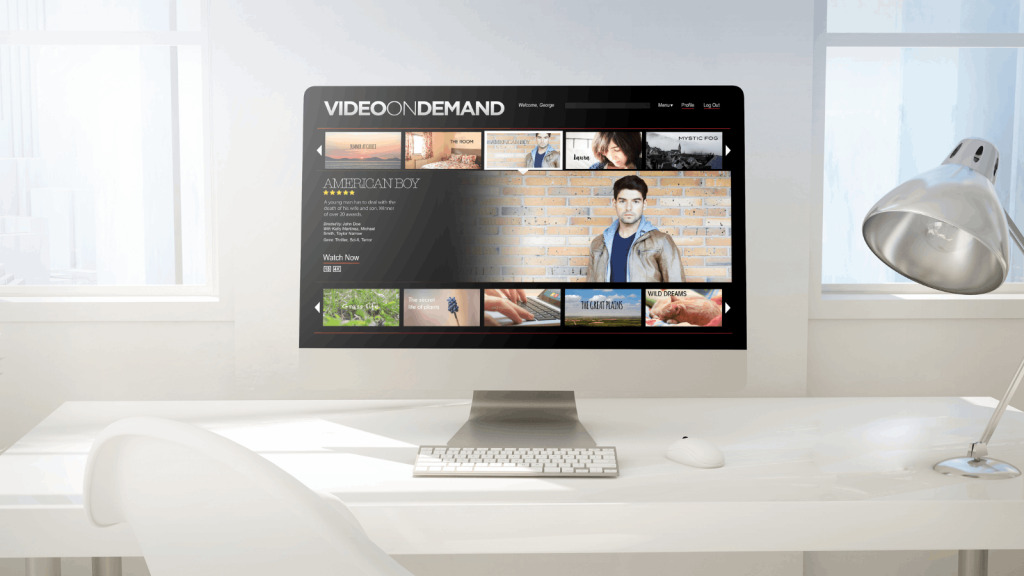
Personalized CTV (Connected TV) ad formats are tailored advertising experiences that leverage data and user insights to deliver highly relevant and customized ads to individual viewers. These ads are designed to resonate with each viewer’s specific preferences, behaviors, and demographics, enhancing engagement and driving better results.
It is highly effective for increasing viewer engagement, improving ad relevance, and ultimately driving conversions. By delivering tailored content and messages that resonate with individual viewers, brands can create a more meaningful and impactful advertising experience in the CTV space.
Here’s how personalized CTV ad formats typically work:
User Profiling
Advertisers collect and analyze data on viewers’ behavior, interests, location, and demographics to create detailed user profiles.
Dynamic Content
Personalized CTV ads dynamically generate content that matches the viewer’s profile using this data. This content can include product recommendations, messaging, visuals, and even pricing tailored to the viewer’s preferences.
Tailored Messaging
The messaging in personalized ads is customized to speak directly to the viewer, addressing their unique needs, interests, and pain points. This approach fosters a deeper connection with the brand.
Recommendations
Personalized CTV ads often include product or content recommendations based on the viewer’s past interactions and preferences. These recommendations can significantly improve click-through and conversion rates.
Geo-Targeting
Ads can be customized based on the viewer’s location, providing relevant local offers or promotions. For example, a restaurant chain can show different menu items and deals depending on the viewer’s proximity to specific locations.
A/B Testing
Advertisers can use A/B testing to refine and optimize personalized ad campaigns continuously. Different ad creatives and messaging can be tested to determine which resonate most effectively with different audience segments.
Frequency and Timing
Personalized ads can also consider when and how frequently a viewer has seen an ad. It helps prevent ad fatigue and ensures a positive viewing experience.
Interactive Elements
Some personalized CTV ads incorporate interactive elements, allowing viewers to engage with the content by clicking, swiping, or responding to calls to action tailored to their interests.
Measurement and Analytics
Advertisers closely monitor performance metrics such as click-through rates, conversion rates, and return on investment (ROI). This data guides further personalization and optimization efforts.
Privacy Compliance
Advertisers must adhere to privacy regulations and obtain proper consent when collecting and using viewer data for personalization, ensuring a transparent and compliant approach.
FAQs
What is the most preferable campaign type for CTV ads?
The most preferable CTV Ad Formats depends on the specific advertising goals, budget, and creative assets available. Many advertisers also choose to run a mix of different campaign types to achieve a well-rounded and effective CTV advertising strategy. To determine the best approach, starting with clear objectives and a deep understanding of the target audience is crucial. Additionally, ongoing monitoring and optimization are essential to ensure the chosen campaign type delivers the desired results.
What are CTV examples?
Here are some common examples of CTV devices and platforms:
- Smart TVs: Smart televisions have built-in internet connectivity and often come with pre-installed streaming apps like Netflix, Amazon Prime Video, Hulu, and YouTube. Examples of smart TV brands include Samsung, LG, Sony, and Panasonic.
- Streaming Devices: These external devices can be connected to a regular TV to enable internet connectivity and access to streaming services. Popular streaming devices include:Roku: Roku offers a range of streaming devices and smart TVs with a user-friendly interface.
- Amazon Fire TV: Amazon’s Fire TV Stick and Fire TV Cube provide access to Amazon Prime Video and other streaming apps.
- Apple TV: Apple TV allows users to access content from the Apple ecosystem, including iTunes and Apple TV+.
- Google Chromecast: Chromecast is a device that allows users to cast content from their mobile devices or computers to the TV.
- Gaming Consoles: Many gaming consoles, such as the PlayStation, Xbox, and Nintendo Switch, offer streaming capabilities and access to popular streaming apps, making them CTV devices.
- Set-Top Boxes: Some cable and satellite TV providers offer set-top boxes with streaming features and access to CTV content alongside traditional TV channels.
- Media Players: Standalone media players, such as the Nvidia Shield TV or Western Digital’s WD TV, can connect to a TV.
- Mobile Devices and Tablets: Mobile devices and tablets with screen mirroring capabilities can also stream content to a CTV, making them indirect examples of CTV.
- Connected TV Platforms: These are operating systems and platforms that power CTV devices, including:
- Google TV: An Android-based platform used in various smart TVs and streaming devices.
- Tizen: Samsung’s proprietary operating system for its smart TVs.
- webOS: LG’s operating system for smart TVs.
- Roku OS: The operating system used on Roku devices and smart TVs.
- Amazon Fire TV OS: The operating system for Amazon’s Fire TV devices.
- OTT (Over-the-Top) Streaming Services: OTT services like Netflix, Amazon Prime Video, Hulu, Disney+, and HBO Max deliver content directly to CTV devices over the internet, bypassing traditional cable or satellite subscriptions.
How long should a CTV ad be?
The ideal length for a CTV (Connected TV) ad can vary depending on several factors, including the type of content, viewer expectations, and advertising goals. However, 15-30 Seconds is a standard length for CTV ads.
Are CTV ads clickable?
Yes, CTV ads can be clickable, but the specific functionality may vary depending on the platform, app, or device used for CTV viewing.
What are the dimensions of a CTV ad?
Common aspect ratios for CTV include 16:9 (widescreen) and 4:3 (standard), but it’s essential to adapt the ad to the aspect ratio of the target platform.
How do I create a CTV ad?
Get in Touch!
Why should I use CTV advertising?
As more viewers shift away from traditional cable TV, CTV provides a direct avenue to reach cord-cutters. Additionally, it can extend beyond the TV screen, as viewers often use second screens like smartphones or tablets while watching. It allows for cross-device campaigns and increased reach.



